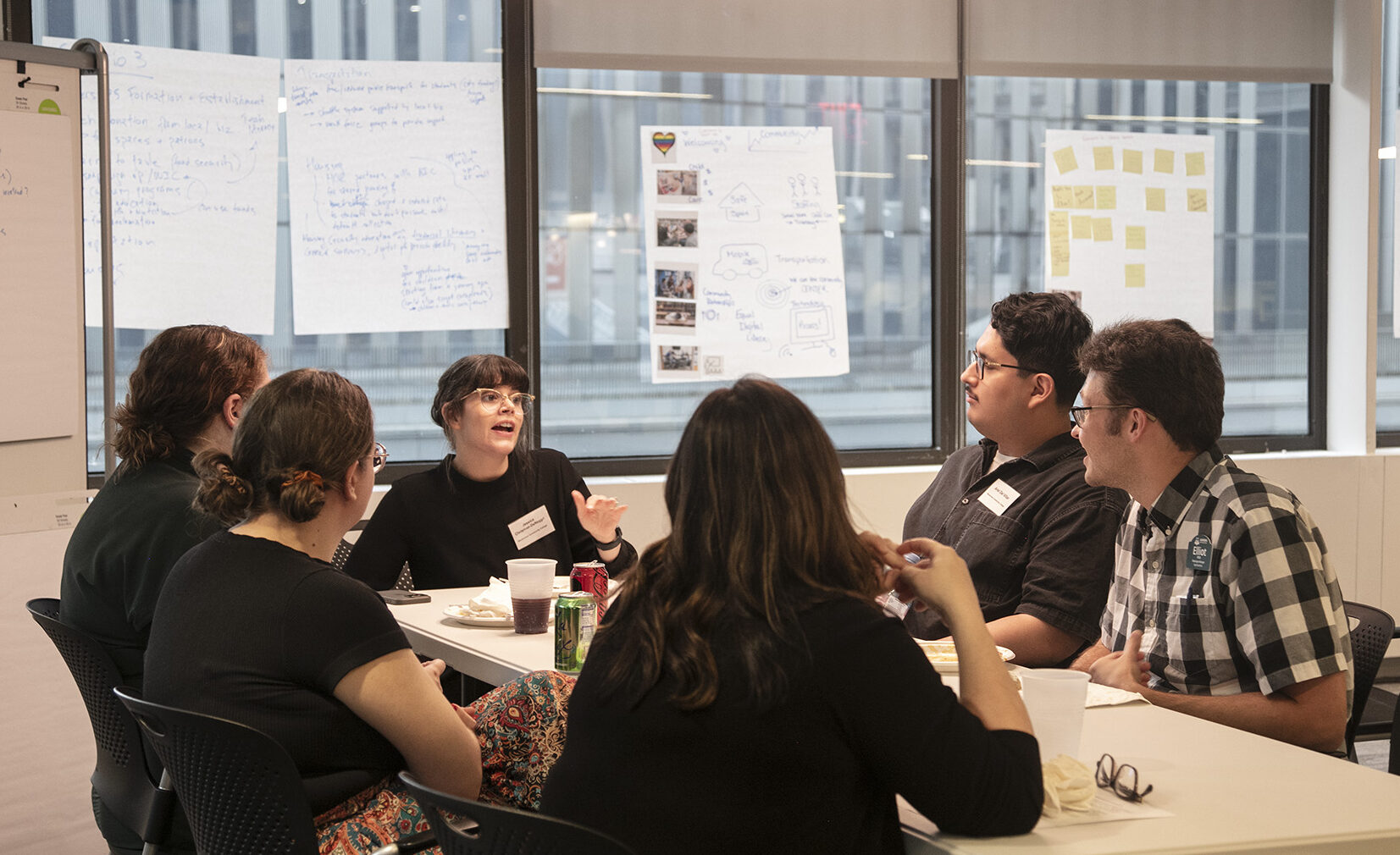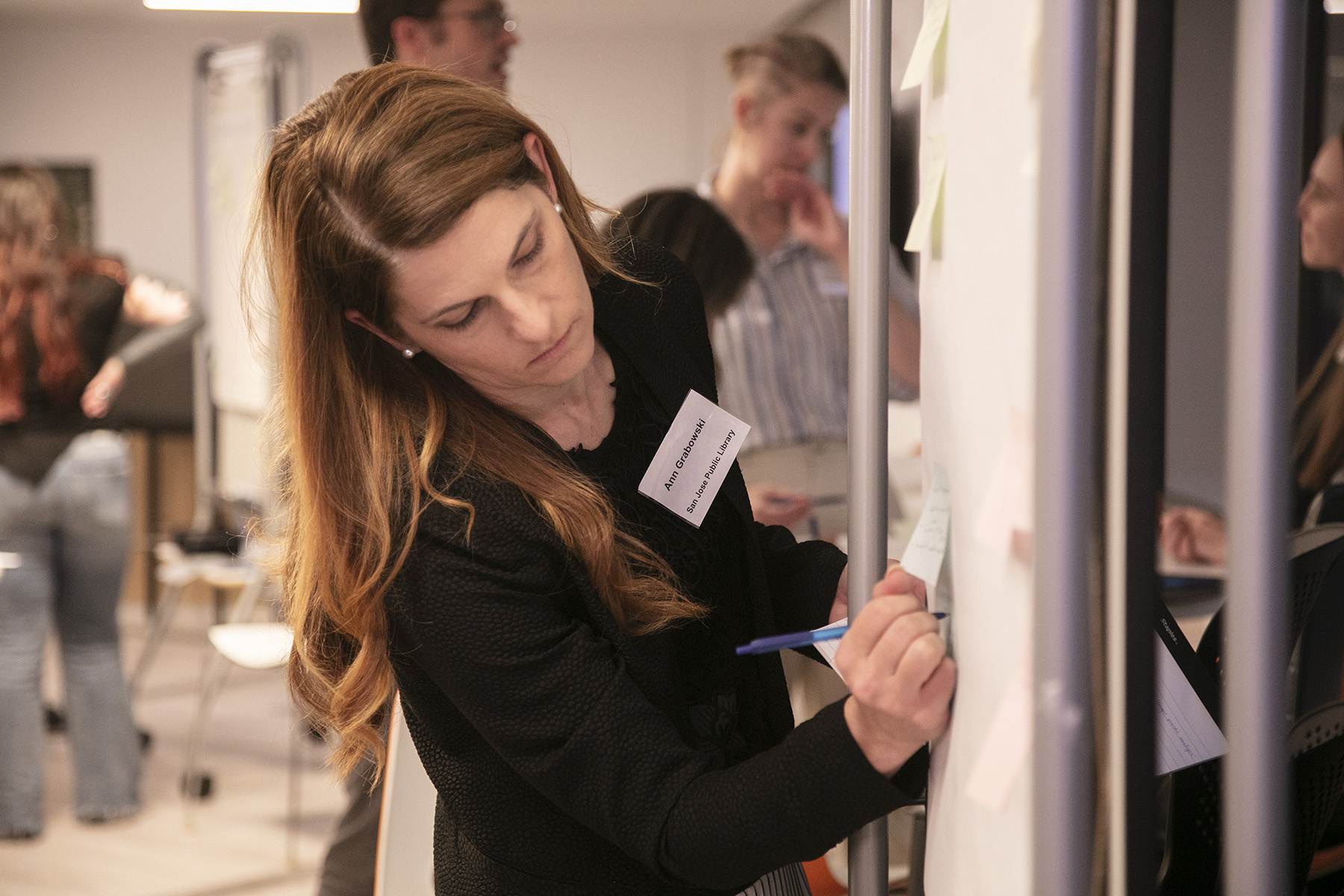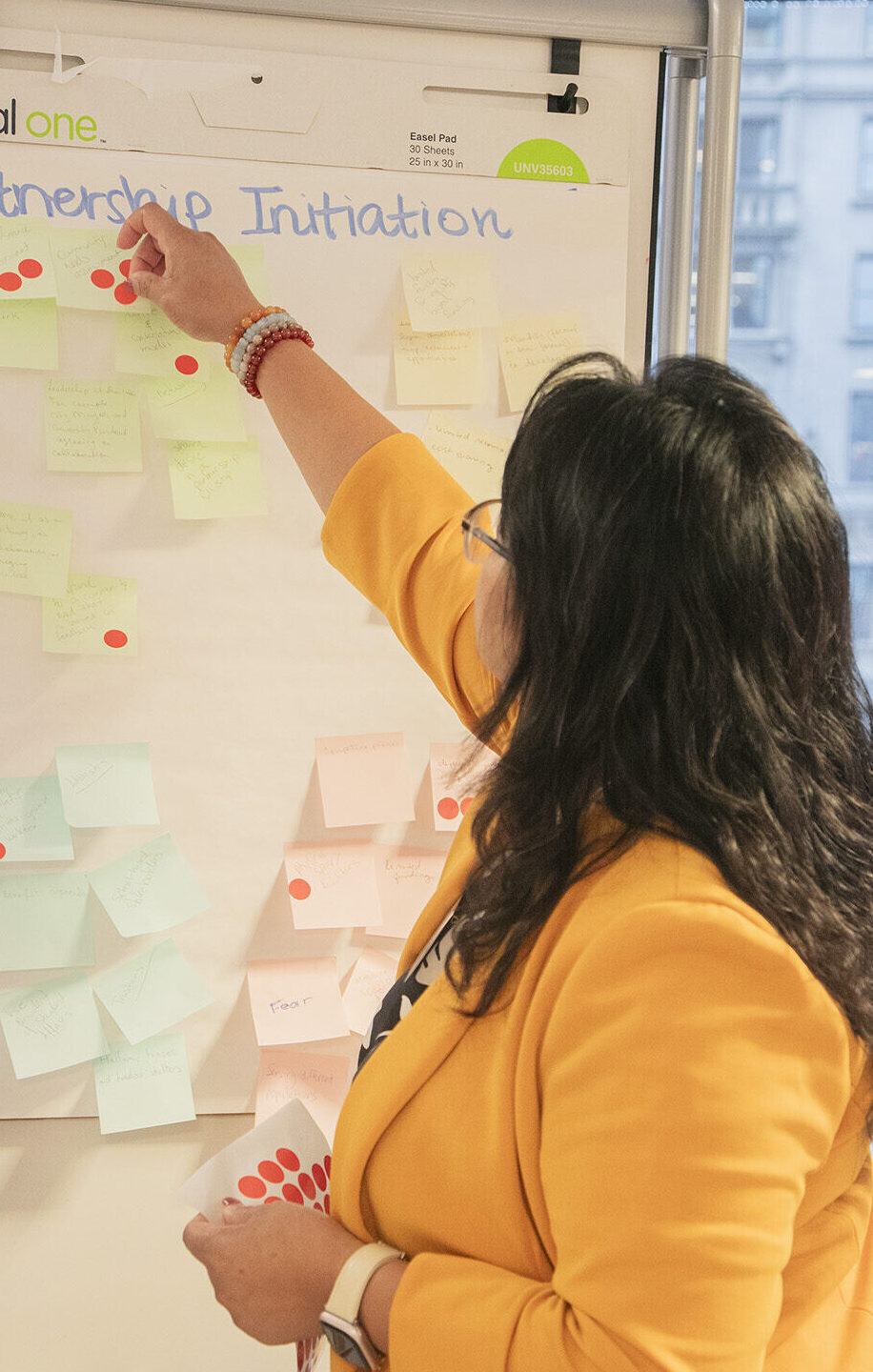Building Stronger Library Partnerships
Lessons from the Library Partnership Development Institute
Working together, academic and public libraries have the potential to meet community needs in powerful and often overlooked ways—providing technology access, digital and information literacy programs, and connections to social services that address basic needs like food, housing, and transportation. These partnerships can also create targeted support for specific populations, including student parents looking for early childhood programming or low-income students navigating financial aid and social service systems. By collaborating, libraries can serve students and their communities more holistically while also maximizing limited resources and expanding their collective reach.
Yet libraries have had little guidance on how to forge and sustain these types of partnerships. Many institutions are eager to collaborate but lack a clear roadmap to answer critical questions: Under what conditions do partnerships thrive? How can libraries identify shared goals and avoid duplicating efforts? How can libraries build structures that can withstand staff turnover and shifting priorities?
In 2023, with funding from ECMC Foundation, the Maximizing Public-Academic Library Partnerships Project set out to find answers to these questions by examining how libraries are supporting student and community basic needs and documenting case studies of successful partnerships. On July 31, 2025, these findings were activated during the Library Partnership Development Institute, a full-day event where project stakeholders, advisors, and library leaders engaged in interactive activities to co-develop a practical framework for partnership development. The day was not only a culmination of the work to date but also a launchpad for new strategies, tools, and relationships that libraries can adapt to strengthen both student support and community engagement.
In this blog post, we share key takeaways from the full day meeting, a recap of the meeting agenda and activities, and some details about the future plans of the project going forward.

Preliminary takeaways
During our convening, we had thoughtful conversations about building stronger, more sustainable partnerships. Here’s what we learned:
- Importance of communication: Partnerships thrive with open dialogue, shared vision, clearly defined roles, and adaptable structures. Both top‑down and bottom‑up communication strategies ensure that all stakeholders are aligned and able to evolve together.
- Strategic planning and documentation: Formal tools, such as Memoranda of Understandings (MOUs) can help clarify roles, set expectations early, and reduce ambiguity. They should also be built to allow room for flexibility, ensuring that partnerships can evolve as needs change.
- Shared identity: Effective partnerships shift the mindset from “What is in it for me?” to “What is in it for us and our community?” Viewing academic and public libraries as a united team can help to build a shared identity that encourages collaboration, fosters a unified service model, and helps patrons see libraries as part of an integrated support system.
- Funding opportunities: Financial sustainability is critical to maintaining and expanding partnerships. While large, national grants are important, local funding sources and place-based foundations are often more aligned with the goals of community-focused library partnerships.
Meeting agenda and activities
To kick off the Library Partnership Development Institute, attendees took part in a community mapping activity that helped visualize the diversity of experiences in the room.
Using a large chart with axes ranging from “hands-on practitioner” to “big picture thinker” and “new to this work” to “veteran in this space,” attendees placed their name on the chart to show where they saw themselves in the context of library partnerships. The exercise grounded the group with a shared purpose and set the tone for collaboration across different perspectives.
During the second activity of the day, attendees collaborated in small groups to envision future partnerships between public and academic libraries. Participants tackled unique scenarios, which ranged from joint-use spaces to rural collaborations, and created vision boards on shared goals, services, and values. The result of these vision boards ended with blueprints for cross-library collaboration.
Later, attendees were split into four breakout rooms to explore different aspects of public-academic library partnerships. Each breakout session explored critical aspects of library partnerships, with the goal of deepening our insights in each topic:
- Reimagining basic needs support: Examined how libraries can address unmet basic needs by rethinking policies, spaces, and services, such as wellness spaces, childcare partnerships, and more inclusive policies. The conversation emphasized cross-sector collaboration, reimagining the library’s role in community care, and challenging assumptions about who libraries serve.
- Outreach and engagement for partnerships and programming: Discussed improving outreach to students and community members by using micro-targeted outreach paired with strategic partnerships and informal cultivation, like coffee chats or outreach coordinators.
- Management, governance, and coordination: Focused on how to align missions, clarify roles, establish flexible communication and decision-making structures, and center both students and community members alike.
- Sustaining momentum: Highlighted the need for clear communication across stakeholder groups, strong documentation, and formalized structures to ensure continuity amid staff turnover and avoid overextension to maintain durable partnerships.
The last activity of the day was a hands-on session, where attendees began the process of co-designing a framework that will guide future public-academic library partnerships. Rotating through six stations representing key stages in the partnership lifecycle, small groups shared recommendations, policy considerations, challenges, and key stakeholders. The session concluded with a gallery walk and dot-voting to surface ideas that resonated most with the group. This collective work will inform a future, publicly-available framework on building and sustaining cross-sector library partnerships.

What’s next?
In the coming months, we will publish our final case study report alongside the Library Partnership Framework co-developed by Institute attendees. These resources, along with the Maximizing Impact Through Collaboration and Public and Academic Libraries in Partnership case study reports, will provide actionable guidance for libraries seeking to initiate and sustain meaningful collaborations, while also highlighting key policy considerations around basic needs and the role libraries can play in addressing them. Together, these publications will translate the lessons of this project into practical strategies, empowering libraries to strengthen partnerships, better support students, and serve their broader communities.
Acknowledgements
We would like to thank all participants and the project’s advisory board members for their engagement, including representatives from the following organizations: San Jose State University, San Jose Public Library, Waubonsee Community College, Messenger Public Library of North Aurora, Aurora Public Library District, and Bakersfield College. We would also like to thank our program officer, Ireri Rivas Mier y Teran from ECMC Foundation, for attending and presenting during the convening. Lastly, we would like to thank our Ithaka S+R colleagues, Elmira Jangjou, Deborah Longino, Sage Love, Christy McDaniel, Liz Looker, Danny Braun, Kimberly Lutz, and Juni Ahari for their support and input.
